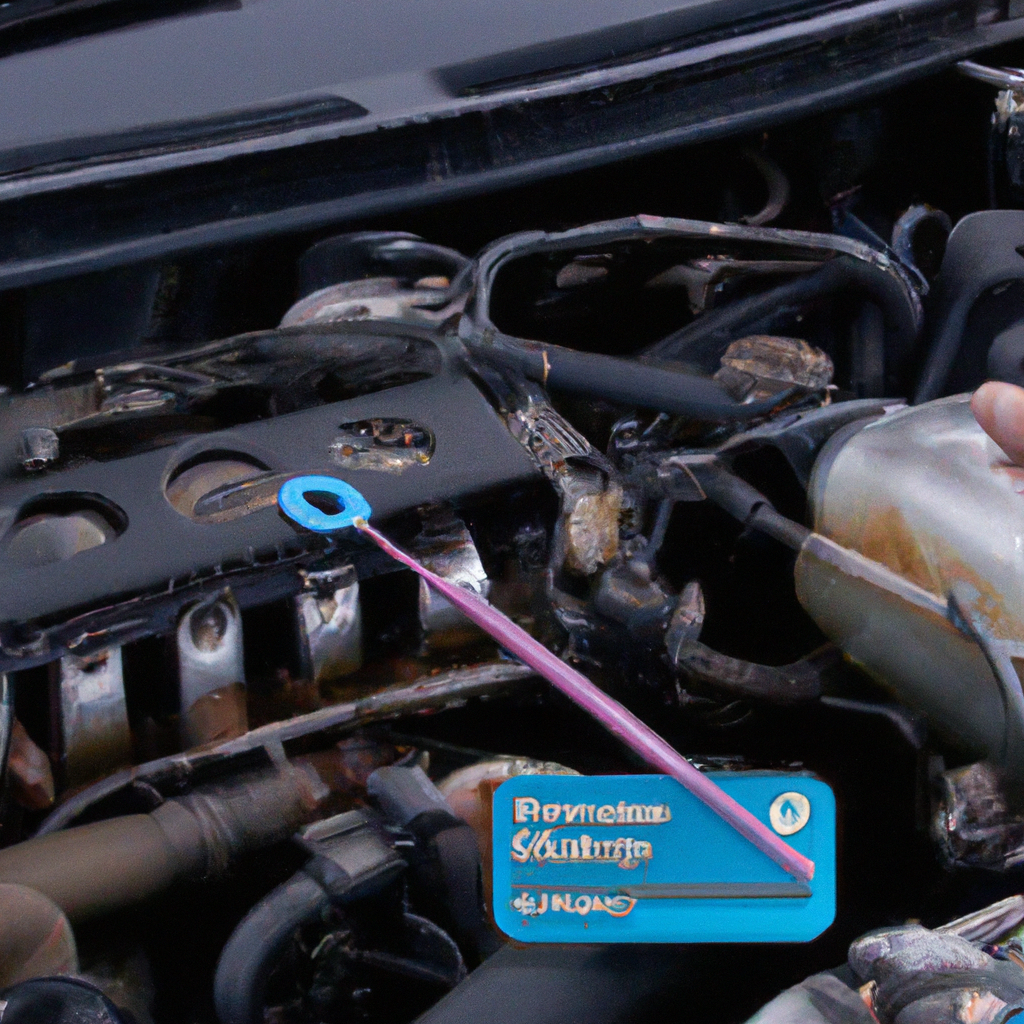Ford F150 Oxygen Sensor Location
Last Updated on by David Jon
In the realm of vehicle maintenance, understanding the intricate components of one’s automobile can indeed be mystifying. One such crucial part is the oxygen sensor in the Ford F150, a sensor instrumental in regulating the car’s fuel and generating optimum performance. This piece outlines in detail its exact location, providing indispensable insights for Ford owners, DIY enthusiasts, mechanics, and anyone engrossed in Ford maintenance. Using a professional and amicable approach, we aim to direct you through the labyrinth of vehicle repair, transforming complex mechanics into digestible, easy-to-implement steps.

Understanding the Role of Oxygen Sensors
Before embarking on the technical and mechanical journey of a Ford F150 oxygen sensor, it’s imperative to get a solid grasp on the fundamental role that oxygen sensors play.
Definition of an Oxygen Sensor
An oxygen sensor, also known as an O2 sensor within the automotive world, is responsible for measuring the proportion of oxygen in a vehicle’s exhaust gases. This humble piece of technology is remarkable and serves a key function in maintaining and ensuring a vehicle’s optimal performance.
Importance of an Oxygen Sensor in a Vehicle
The role an oxygen sensor plays in a vehicle is multi-faceted but with one primary function – to provide accurate readings on exhaust emissions. This data it provides helps regulate the air-fuel mixture that is fed into the engine. The right balance of air and fuel creates an efficient combustion process, promoting a smoother performance, optimal fuel efficiency, and reduced exhaust emissions.
Functionality of the Oxygen Sensor in a Ford F150
The oxygen sensor within the Ford F150 operates the same as in any other vehicle. It constantly assesses the level of oxygen present in the exhaust gases and communicates this information to the vehicle’s engine control unit (ECU). The ECU then alters the amount of fuel injected into the engine to maintain a perfect stoichiometric ratio – the ideal air-to-fuel ratio for combustion.
Anatomy of Ford F150 Oxygen Sensor
Understanding the anatomy of a Ford F150 oxygen sensor is important to ensure it functions correctly and to identify any potential issues that may arise.
Components of an Oxygen Sensor
An oxygen sensor is made up of a zirconia or titania element enclosed in a steel shell, encased in a protective layer of vented metal or ceramic. The sensor is connected to the vehicle’s onboard computer through a series of electrical wires.
How it Connects to the Engine
An oxygen sensor is typically screwed into the exhaust manifold or threaded onto the exhaust pipe. Its position allows it to monitor and assess the amount of oxygen present in the exhaust gases as they leave the engine.
Different Types of Oxygen Sensors in Ford F150
Ford F150 trucks are equipped with two main types of oxygen sensors – the pre-catalytic converter sensor and the post-catalytic converter sensor. Both serve unique functions in monitoring oxygen levels at various stages of the exhaust process.
Location of Ford F150 Oxygen Sensors
Oxygen sensors are strategically placed for optimal monitoring of exhaust gases at different stages of the combustion process.
Identifying the specific location of Oxygen Sensors in Ford F150
In most modern Ford F150 trucks, you’ll find the oxygen sensors located in the exhaust system. The pre-cat sensor is housed in the exhaust manifold, while the post-cat sensor is typically located just after the catalytic converter.
The number of Oxygen Sensors in Ford F150
On an average, Ford F150 trucks come equipped with two to four oxygen sensors. The number depends on the specific model year and the level of emission control required.
Understanding pre-catalytic converter and post-catalytic converter sensors
The pre-cat sensor, also termed as upstream sensor, measures the amount of oxygen in the exhaust gases right after it leaves the engine, but before it reaches the catalytic converter. This information primarily influences the air-fuel mixture. Conversely, the post-cat or downstream sensor measures the oxygen level after the gases have passed through the catalytic converter. This information validates the efficacy of the catalytic converter.

Steps to Locate the Ford F150 Oxygen Sensors
Being familiar with the layout of your Ford F150’s exhaust system will make locating the oxygen sensors a breeze.
Tools Needed to Access F150 Oxygen Sensors
Typically, a standard socket set and possibly a specially designed oxygen sensor socket may be required to access the sensors.
Safety Precactions
Remember, always prioritize safety during any vehicle inspection or maintenance work. Ensure the vehicle is cool to prevent burns, use jack stands when necessary, and always wear protective gear.
Step-By-Step Instructions on Locating Oxygen Sensor
Begin by locating the exhaust manifold, usually at the front of the vehicle. The pre-catalytic converter sensor will be screwed into the manifold. Follow the exhaust pipe towards the rear of the vehicle to locate the post-cat sensor, which will be located just after the catalytic converter.
Symptoms of a Failing Ford F150 Oxygen Sensor
A faltering oxygen sensor can often be detected due to a collection of specific symptoms.
Performance Symptoms of Bad Oxygen Sensor
A faulty oxygen sensor may cause the Ford F150 to exhibit poor performance, including rough idling, stuttering acceleration, or a general loss of power.
Signs from the Vehicle’s On-Board Diagnostic System
Modern vehicles, such as the Ford F150, are equipped with an on-board diagnostic system that may illuminate a ‘Check Engine’ light on the dashboard if a sensor issue is detected.
Fuel Efficiency Symptoms
Perhaps one of the most common signs of a failing oxygen sensor is reduced fuel efficiency. This is caused by the engine control unit injecting more fuel than necessary due to incorrect readings from the sensor.
Testing the Oxygen Sensor on a Ford F150
If you suspect an oxygen sensor issue, conducting a test can confirm its functionality.
Tools Required for Testing
A digital multimeter is typically the only tool required to test an oxygen sensor’s effectiveness.
Safety Tips for Testing
Again, safety is paramount during any test procedures. Ensure the vehicle is properly supported with jack stands and cooled down before starting.
Step-By-Step Instructions on How to Test an Oxygen Sensor
Connect the multimeter to the oxygen sensor’s output wire and monitor the voltage. A functioning sensor will generally fluctuate between 0.1 and 0.9 volts several times per minute. If the reading is consistently outside of this range, the sensor may be defective.
Replacing the Oxygen Sensor in a Ford F150
When you should Replace an Oxygen Sensor
As a general rule, oxygen sensors should be replaced approximately every 100,000 miles or if you’ve confirmed the sensor is faulty via testing.
Tools Needed for Replacement
Typically, an oxygen sensor socket, a ratchet, and a new oxygen sensor are all that’s needed for replacement.
Step-By-Step Instructions for Replacing an Oxygen Sensor
Begin by locating and removing the faulty sensor using the oxygen sensor socket. Then, simply screw in the new sensor, ensuring it is secure but not overly tight. Finally, reconnect the wiring of the new sensor.
Interpreting Oxygen Sensor Readings in Ford F150
Once the new oxygen sensor is in place, understanding its readings is key to ensuring its proper functioning.
How to Interpret the Oxygen Sensor Readings
The readings from an oxygen sensor are expressed in voltage. A rich mixture will produce a high voltage (around 0.9v), while a lean mixture will result in a lower voltage (around 0.1v).
What a Normal Reading Looks Like
A normal reading will fluctuate between 0.1v and 0.9v several times per minute. This shows that the oxygen sensor is effectively measuring and reacting to changes in the exhaust gas mixture.
What an Abnormal Reading Implicates
If the readings are consistently outside of this range, or if they do not fluctuate as mentioned previously, the sensor may be faulty or the vehicle may have other underlying issues such as air leaks or fuel injector problems.
Maintenance Tips for Ford F150 Oxygen Sensors
Proactive maintenance can extend the lifespan of your truck’s oxygen sensors.
Frequency of Replacement for Oxygen Sensors
While there’s no definitive timeline, oxygen sensors generally should be replaced every 100,000 miles. Regular inspections and maintenance can help identify if a replacement is needed sooner.
How Regular Maintenance Impacts Oxygen Sensor’s Efficacy
Maintaining your vehicle properly can keep your oxygen sensors functioning efficiently. This includes regular oil changes, ensuring your engine is tuned correctly, and replacing the air filter as needed.
Tips on Extending Oxygen Sensor Lifespan
To extend the lifespan of your oxygen sensors, avoid silicon or oil-based additives in your fuel. High-quality gas and diligent maintenance can lead to longer sensor life and better performance.
Consequences of Ignoring Faulty Ford F150 Oxygen Sensors
Ignoring signs of a faulty oxygen sensor can lead to serious consequences for your Ford F150.
Impact on Vehicle Performance
Performance issues, like rough idling, hesitation upon acceleration, or a general loss in power, are common consequences of a faltering oxygen sensor.
Potential Damages to the Engine
If left unchecked, a faulty oxygen sensor can cause excessive wear and tear on your engine due to an improperly balanced air-fuel mixture.
Effect on Vehicle’s Gas Mileage
Most importantly, perhaps the most noticeable consequence is a drastic reduction in fuel efficiency, leading to increased costs at the pump.
In conclusion, thoroughly understanding the critical role, anatomy, and maintenance requirements of the Ford F150’s oxygen sensors is key to maintaining your truck’s performance. A properly functioning oxygen sensor, after all, is a small component that can make a huge difference.



